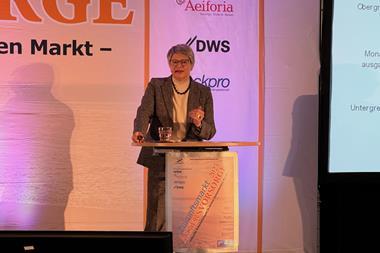The leaked draft of the IORP II Directive has received generally positive reactions from experts in the European pensions industry.
Hans van Meerten, an associate at law firm Clifford Chance, said the draft version was very welcome, particularly with respect to cross-border and prudential regulations.
He said the removal of the full funding requirement was a “big step forward”, given previous criticisms on the definition of cross-border activity, and that the added detail on prudential regulations was a positive move by the Commission.
“It means, if IORPs do not comply with the Commission’s interpretation of prudential regulation, they might have a problem,” he said. “But, by regulating prudential regulation, you also regulate social and labour laws [in member states].”
Van Meerten said it was a huge step in enhancing cross-border activity, and introduced mutual recognition between member states.
Even when looking at the added detail on member communications and trustee board governance – pillars two and three – van Meerten said little came as a shock.
“There is a sort of ‘copy and paste’ from the Solvency II Directive with regards to pillars two and three,” he said. “It is new that the way of thinking is in line with the Solvency II and UCITS way of thinking, and there is clear harmonisation in this field, which is welcome.”
Dave Roberts, senior consultant at global consultancy Towers Watson, said that, despite rumours and counter-rumours, the leaked draft was evidence of commissioner Michel Barnier’s determination to press ahead with IORP II.
“Barnier is due to publish a follow-up paper on long-term investments, and he may try to tie IORP II to this, as it could ease certain current investment restrictions on pensions – particularly for cross-border plans,” he said.
On cross-border and prudential regulations, Mark Dowsy, senior consultant at Towers Watson, said the added detail over prudential regulations created uncertainty for anything currently considered under that banner but not included in the Commission’s draft.
He also expressed doubts as to whether it would reach the final draft in its current form.
“It will not be straightforward to push this one through,” he said.
“There are certain elements that some member states may argue are social and labour law, which is a member state competence. This could potentially frustrate cross-border provisions.
“Because the Commission is looking to iron out inconsistencies, it should mean it is easier to operate across borders, as it limits what member states can say is social and labour law.”
Aon Hewitt said that if the final version of the directive followed the content of the leaked draft, it would provide a “significant boost” to cross-border pension provision in Europe.
Paul Bonser, partner and head of Aon Hewitt EU Cross-Border Pensions Consulting, said the legislation could be a “real breakthrough”.
“Aon Hewitt’s large global cross-border clients have met the Commission to explain how and why they are setting up cross-border plans, and how things can be made easier,” he said.
“If the Commission has listened – and this leaked draft would indicate that they have – then there could be a golden opportunity for multinational companies.”
But not everyone is convinced. Bernhard Wiesner – senior vice-president of pensions at the Bosch pension fund and a board member of the German pension fund association – spoke of urgency of cross-border pensions for European worker.
“Occupational pensions are the most efficient form of funded retirement provision because they rest on employers as well as social partners,” he said.
“It currently only exists in very few member states – and even then, often insufficiently so. Occupation pensions are urgently needed for workers on a large-scale across the whole of the EU.”
However, on the merits of the draft IORP II Directive, he was less than optimistic.
“So far, it is unapparent how this draft is to encourage employers and social partners to strengthen and expand occupational pensions and IORPs within the EU.”










No comments yet